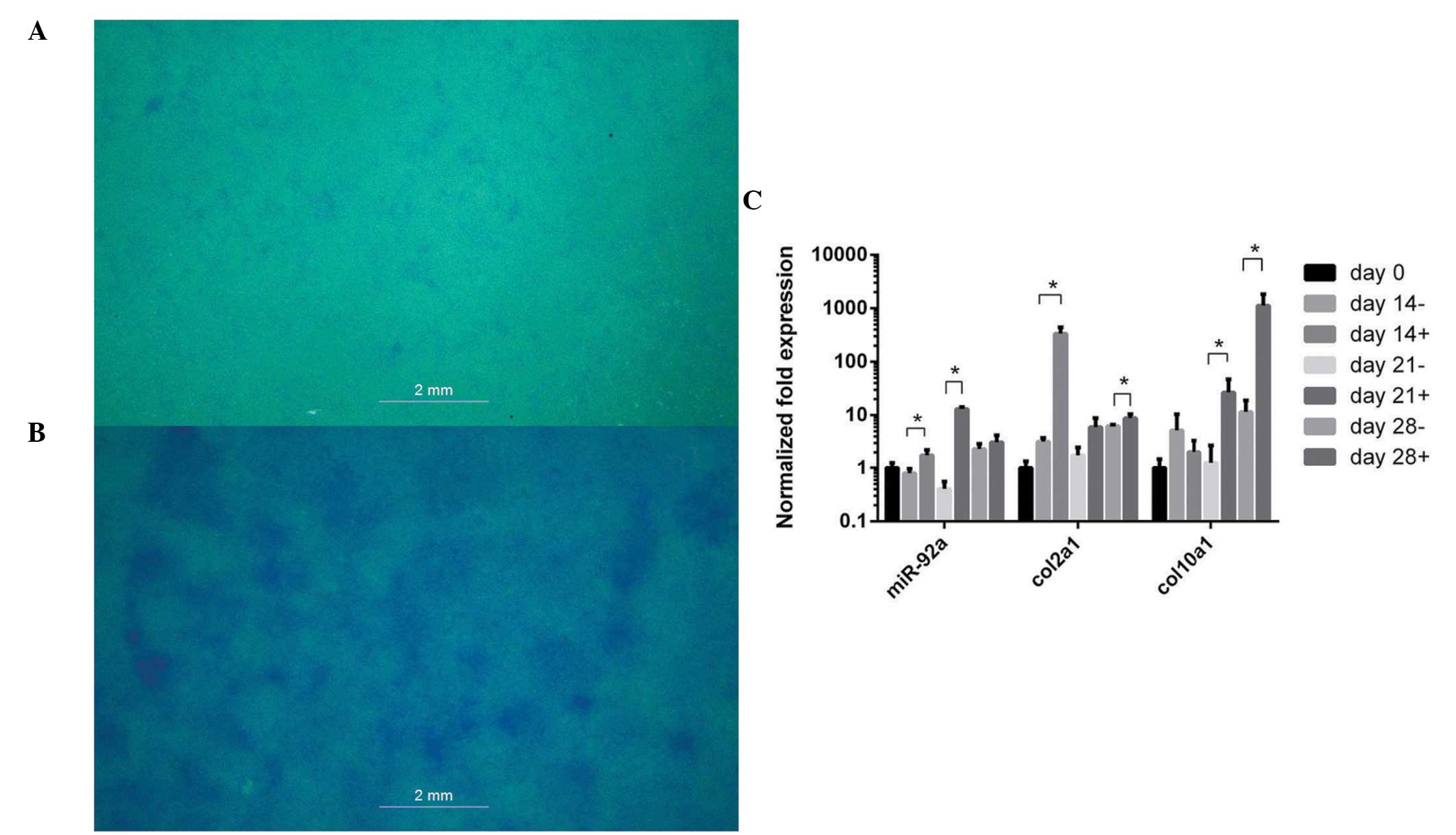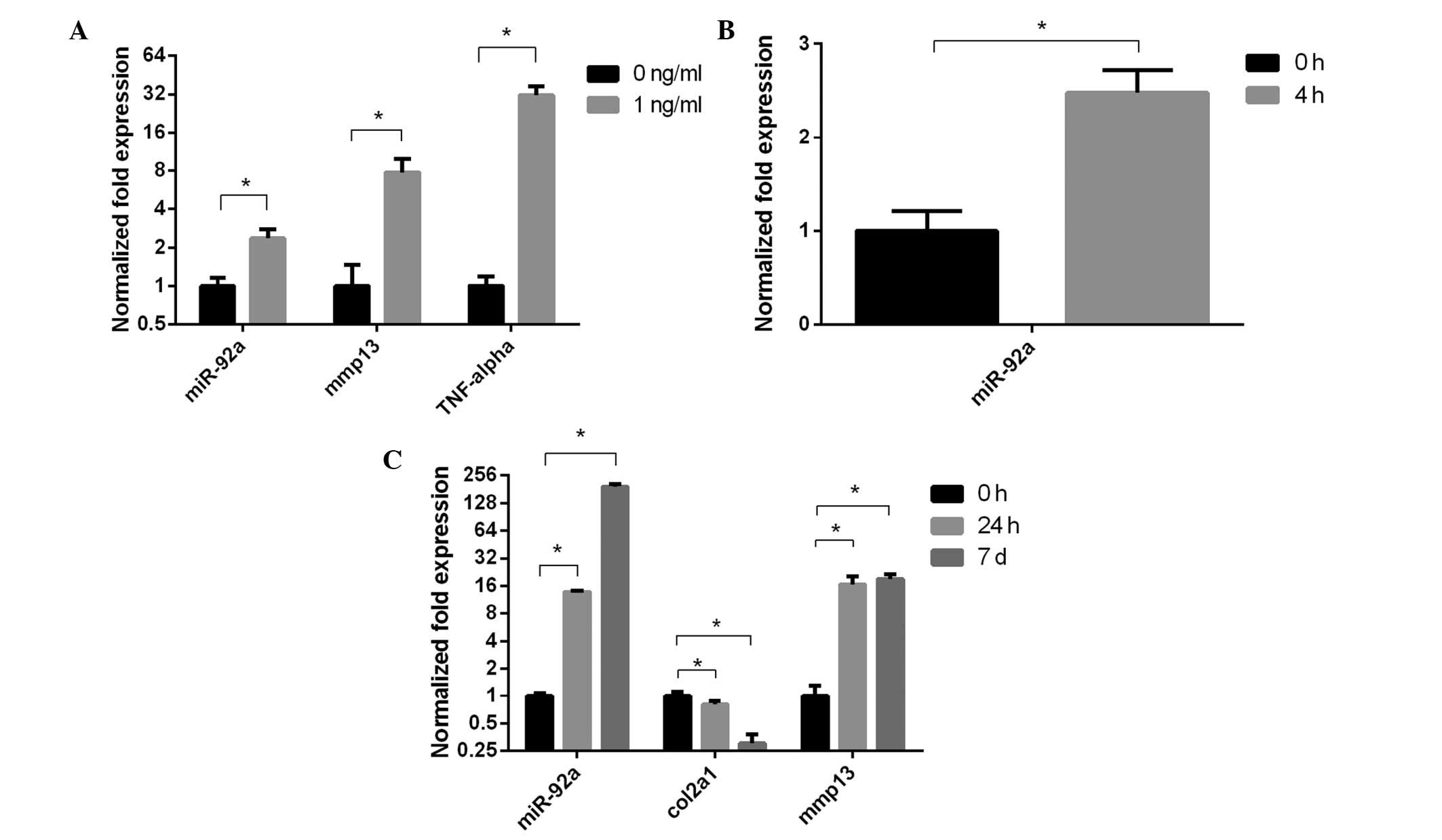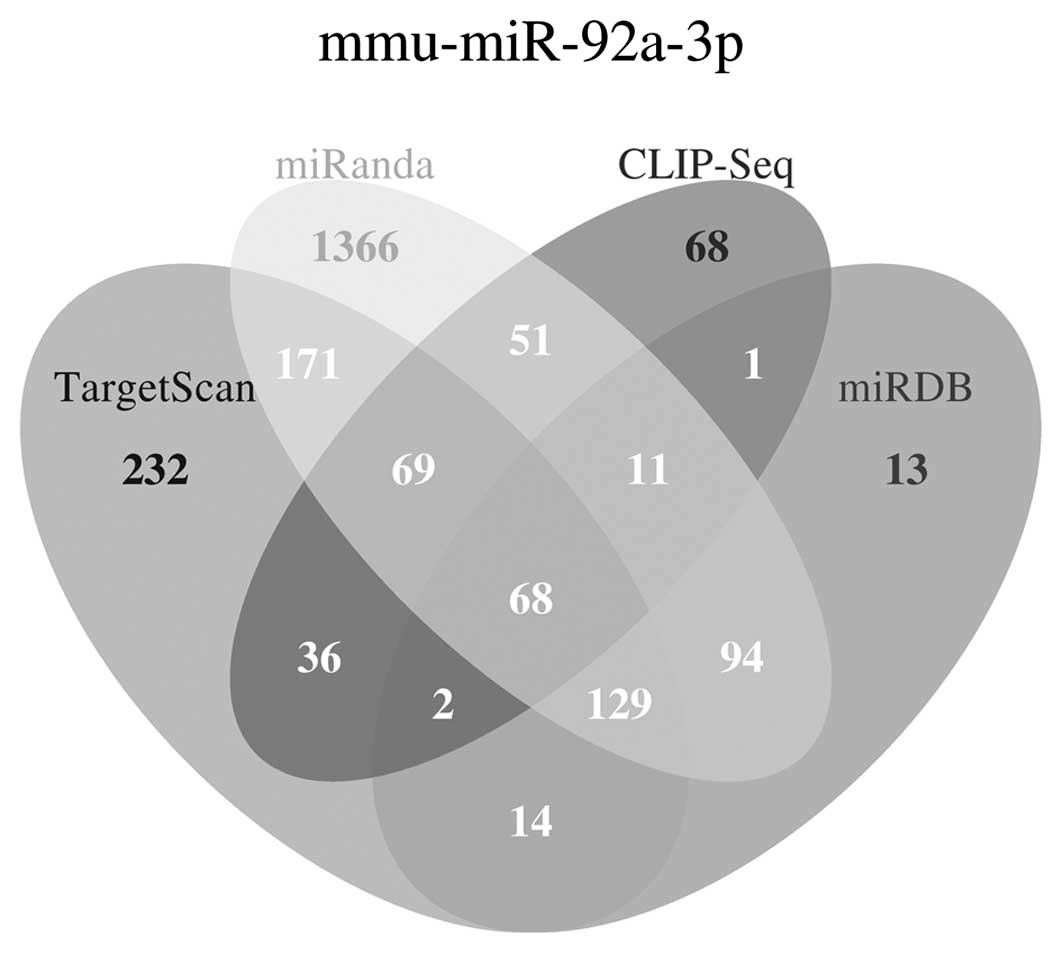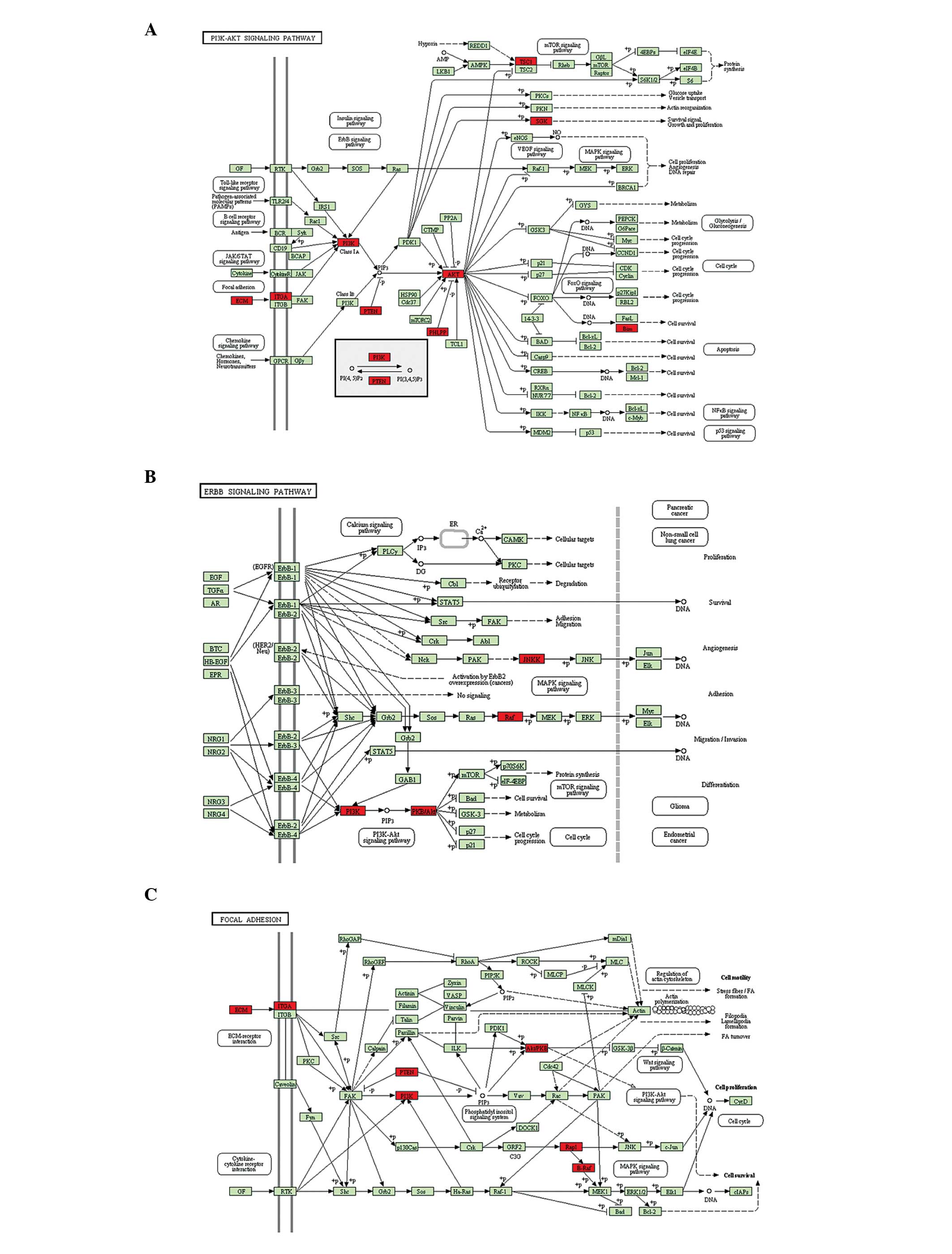|
1
|
Li Y, Wei X, Zhou J and Wei L: The
age-related changes in cartilage and osteoarthritis. Biomed Res
Int. 2013:9165302013. View Article : Google Scholar : PubMed/NCBI
|
|
2
|
Mathieu PS and Loboa EG: Cytoskeletal and
focal adhesion influences on mesenchymal stem cell shape,
mechanical properties and differentiation down osteogenic,
adipogenic and chondrogenic pathways. Tissue Eng Part B Rev.
18:436–444. 2012. View Article : Google Scholar : PubMed/NCBI
|
|
3
|
Beier F and Loeser RF: Biology and
pathology of Rho GTPase, PI-3 kinase-Akt and MAP kinase signaling
pathways in chondrocytes. J Cell Biochem. 110:573–580. 2010.
View Article : Google Scholar : PubMed/NCBI
|
|
4
|
Chen J, Crawford R and Xiao Y: Vertical
inhibition of the PI3K/Akt/mTOR pathway for the treatment of
osteoarthritis. J Cell Biochem. 114:245–249. 2013. View Article : Google Scholar
|
|
5
|
Rokutanda S, Fujita T, Kanatani N, Yoshida
CA, Komori H, Liu W, Mizuno A and Komori T: Akt regulates skeletal
development through GSK3, mTOR and FoxOs. Dev Biol. 328:78–93.
2009. View Article : Google Scholar : PubMed/NCBI
|
|
6
|
Malemud CJ: Intracellular signaling
pathways in rheumatoid arthritis. J Clin Cell Immunol. 4:1602013.
View Article : Google Scholar
|
|
7
|
Xian CJ: Roles of epidermal growth factor
family in the regulation of postnatal somatic growth. Endocr Rev.
28:284–296. 2007. View Article : Google Scholar : PubMed/NCBI
|
|
8
|
Carthew RW and Sontheimer EJ: Origins and
Mechanisms of miRNAs and siRNAs. Cell. 136:642–655. 2009.
View Article : Google Scholar : PubMed/NCBI
|
|
9
|
Hong E and Reddi AH: MicroRNAs in
chondrogenesis, articular cartilage and osteoarthritis:
Implications for tissue engineering. Tissue Eng Part B Rev.
18:445–453. 2012. View Article : Google Scholar : PubMed/NCBI
|
|
10
|
Zhang Z, Kang Y, Zhang Z, Zhang H, Duan X,
Liu J, Li X and Liao W: Expression of microRNAs during
chondrogenesis of human adipose-derived stem cells. Osteoarthritis
Cartilage. 20:1638–1646. 2012. View Article : Google Scholar : PubMed/NCBI
|
|
11
|
Thirion S and Berenbaum F: Culture and
phenotyping of chondrocytes in primary culture. Methods Mol Med.
100:1–14. 2004.PubMed/NCBI
|
|
12
|
Zhang ZJ, Zhang H, Kang Y, Sheng PY, Ma
YC, Yang ZB, Zhang ZQ, Fu M, He AS, Liao WM, et al: miRNA
expression profile during osteogenic differentiation of human
adipose-derived stem cells. J Cell Biochem. 113:888–898. 2012.
View Article : Google Scholar : PubMed/NCBI
|
|
13
|
Zhang L, Su P, Xu C, Yang J, Yu W and
Huang D: Chondrogenic differentiation of human mesenchymal stem
cells: A comparison between micromass and pellet culture systems.
Biotechnol Lett. 32:1339–1346. 2010. View Article : Google Scholar : PubMed/NCBI
|
|
14
|
Estes BT, Diekman BO, Gimble JM and Guilak
F: Isolation of adipose-derived stem cells and their induction to a
chondrogenic phenotype. Nat Protoc. 5:1294–1311. 2010. View Article : Google Scholar : PubMed/NCBI
|
|
15
|
Yao Y and Wang Y: ATDC5: An excellent in
vitro model cell line for skeletal development. J Cell Biochem.
114:1223–1229. 2013. View Article : Google Scholar
|
|
16
|
Newton PT, Staines KA, Spevak L, Boskey
AL, Teixeira CC, Macrae VE, Canfield AE and Farquharson C:
Chondrogenic ATDC5 cells: An optimised model for rapid and
physiological matrix mineralisation. Int J Mol Med. 30:1187–1193.
2012.PubMed/NCBI
|
|
17
|
Atsumi T, Miwa Y, Kimata K and Ikawa Y: A
chondrogenic cell line derived from a differentiating culture of
AT805 teratocarcinoma cells. Cell Differ Dev. 30:109–116. 1990.
View Article : Google Scholar : PubMed/NCBI
|
|
18
|
Miyaki S, Nakasa T, Otsuki S, Grogan SP,
Higashiyama R, Inoue A, Kato Y, Sato T, Lotz MK, Asahara H, et al:
MicroRNA-140 is expressed in differentiated human articular
chondrocytes and modulates interleukin-1 responses. Arthritis
Rheum. 60:2723–2730. 2009. View Article : Google Scholar : PubMed/NCBI
|
|
19
|
Simsa-Maziel S and Monsonego-Ornan E:
Interleukin-1β promotes proliferation and inhibits differentiation
of chondrocytes through a mechanism involving down-regulation of
FGFR-3 and p21. Endocrinology. 153:2296–2310. 2012. View Article : Google Scholar : PubMed/NCBI
|
|
20
|
MacRae VE, Farquharson C and Ahmed SF: The
restricted potential for recovery of growth plate chondrogenesis
and longitudinal bone growth following exposure to pro-inflammatory
cytokines. J Endocrinol. 189:319–328. 2006. View Article : Google Scholar : PubMed/NCBI
|
|
21
|
Schmittgen TD and Livak KJ: Analyzing
real-time PCR data by the comparative C(T) method. Nat Protoc.
3:1101–1108. 2008. View Article : Google Scholar : PubMed/NCBI
|
|
22
|
Kita K, Kimura T, Nakamura N, Yoshikawa H
and Nakano T: PI3K/Akt signaling as a key regulatory pathway for
chondrocyte terminal differentiation. Genes Cells. 13:839–850.
2008. View Article : Google Scholar : PubMed/NCBI
|
|
23
|
Fisher MC, Clinton GM, Maihle NJ and Dealy
CN: Requirement for ErbB2/ErbB signaling in developing cartilage
and bone. Dev Growth Differ. 49:503–513. 2007. View Article : Google Scholar : PubMed/NCBI
|
|
24
|
Takahashi I, Onodera K, Sasano Y, et al:
Effect of stretching on gene expression of beta1 integrin and focal
adhesion kinase and on chondrogenesis through cell-extracellular
matrix interactions. Eur J Cell Biol. 82:182–192. 2003. View Article : Google Scholar : PubMed/NCBI
|
|
25
|
Knudson CB: Hyaluronan and CD44: strategic
players for cell-matrix interactions during chondrogenesis and
matrix assembly. Birth Defects Res C Embryo Today. 69:174–196.
2003. View Article : Google Scholar : PubMed/NCBI
|
|
26
|
Valera VA, Walter BA, Linehan WM and
Merino MJ: Regulatory Effects of microRNA-92 (miR-92) on VHL Gene
Expression and the Hypoxic Activation of miR-210 in clear cell
renal cell carcinoma. J Cancer. 2:515–526. 2011. View Article : Google Scholar : PubMed/NCBI
|
|
27
|
Sharifi M, Salehi R, Gheisari Y and Kazemi
M: Inhibition of microRNA miR-92a induces apoptosis and inhibits
cell proliferation in human acute promyelocytic leukemia through
modulation of p63 expression. Mol Biol Rep. 41:2799–2808. 2014.
View Article : Google Scholar : PubMed/NCBI
|
|
28
|
Ning G, Liu X, Dai M, Meng A and Wang Q:
MicroRNA-92a upholds Bmp signaling by targeting noggin3 during
pharyngeal cartilage formation. Dev Cell. 24:283–295. 2013.
View Article : Google Scholar : PubMed/NCBI
|
|
29
|
Kawai J, Akiyama H, Shigeno C, Ito H,
Konishi J and Nakamura T: Effects of transforming growth
factor-beta signaling on chondrogenesis in mouse chondrogenic EC
cells, ATDC5. Eur J Cell Biol. 78:707–714. 1999. View Article : Google Scholar : PubMed/NCBI
|
|
30
|
Okazaki K and Sandell LJ: Extracellular
matrix gene regulation. Clin Orthop Relat Res. 427(Suppl):
S123–S128. 2004. View Article : Google Scholar : PubMed/NCBI
|
|
31
|
Nakki A, Videman T, Kujala UM, Suhonen M,
Männikkö M, Peltonen L, Battié MC, Kaprio J and Saarela J:
Candidate gene association study of magnetic resonance
imaging-based hip osteoarthritis (OA): Evidence for COL9A2 gene as
a common predisposing factor for hip OA and lumbar disc
degeneration. J Rheumatol. 38:747–752. 2011. View Article : Google Scholar
|
|
32
|
Gleghorn L, Ramesar R, Beighton P and
Wallis G: A mutation in the variable repeat region of the aggrecan
gene (AGC1) causes a form of spondyloepiphyseal dysplasia
associated with severe, premature osteoarthritis. Am J Hum Genet.
77:484–490. 2005. View
Article : Google Scholar : PubMed/NCBI
|
|
33
|
Aladin DM, Cheung KM, Chan D, Yee AF, Jim
JJ, Luk KD and Lu WW: Expression of the Trp2 allele of COL9A2 is
associated with alterations in the mechanical properties of human
intervertebral discs. Spine (Phila Pa 1976). 32:2820–2826. 2007.
View Article : Google Scholar
|
|
34
|
Kim NK, Shin DA, Han IB, Yoo EH, Kim SH
and Chung SS: The association of aggrecan gene polymorphism with
the risk of intervertebral disc degeneration. Acta Neurochir
(Wien). 153:129–133. 2011. View Article : Google Scholar
|
|
35
|
Fiedler J, Stöve J, Heber F and Brenner
RE: Clinical phenotype and molecular diagnosis of multiple
epiphyseal dysplasia with relative hip sparing during childhood
(EDM2). Am J Med Genet. 112:144–153. 2002. View Article : Google Scholar : PubMed/NCBI
|
|
36
|
Briggs MD, Choi H, Warman ML, Loughlin JA,
Wordsworth P, Sykes BC, Irven CM, Smith M, Wynne-Davies R, Lipson
MH, et al: Genetic mapping of a locus for multiple epiphyseal
dysplasia (EDM2) to a region of chromosome 1 containing a type IX
collagen gene. Am J Hum Genet. 55:678–684. 1994.PubMed/NCBI
|
|
37
|
Bi W, Deng JM, Zhang Z, Behringer RR and
de Crombrugghe B: Sox9 is required for cartilage formation. Nat
Genet. 22:85–89. 1999. View
Article : Google Scholar : PubMed/NCBI
|
|
38
|
Hu G, Codina M and Fisher S: Multiple
enhancers associated with ACAN suggest highly redundant
transcriptional regulation in cartilage. Matrix Biol. 31:328–337.
2012. View Article : Google Scholar : PubMed/NCBI
|
|
39
|
Ge YZ, Xu LW, Xu Z, et al: Expression
Profiles and Clinical Significance of MicroRNAs in Papillary Renal
Cell Carcinoma: A STROBE-Compliant Observational Study. Medicine.
(Baltimore); 94. pp. e7672015, View Article : Google Scholar
|
|
40
|
Xie J, Tan ZH, Tang X, et al: MiR-374b-5p
suppresses RECK expression and promotes gastric cancer cell
invasion and metastasis. World J Gastroenterol. 20:17439–17447.
2014. View Article : Google Scholar : PubMed/NCBI
|
|
41
|
Bentwich I: Prediction and validation of
microRNAs and their targets. Febs Lett. 579:5904–5910. 2005.
View Article : Google Scholar : PubMed/NCBI
|
|
42
|
ElHefnawi M, Soliman B, Abu-Shahba N and
Amer M: An integrative meta-analysis of microRNAs in hepatocellular
carcinoma. Genomics Proteomics Bioinformatics. 11:354–367. 2013.
View Article : Google Scholar : PubMed/NCBI
|














